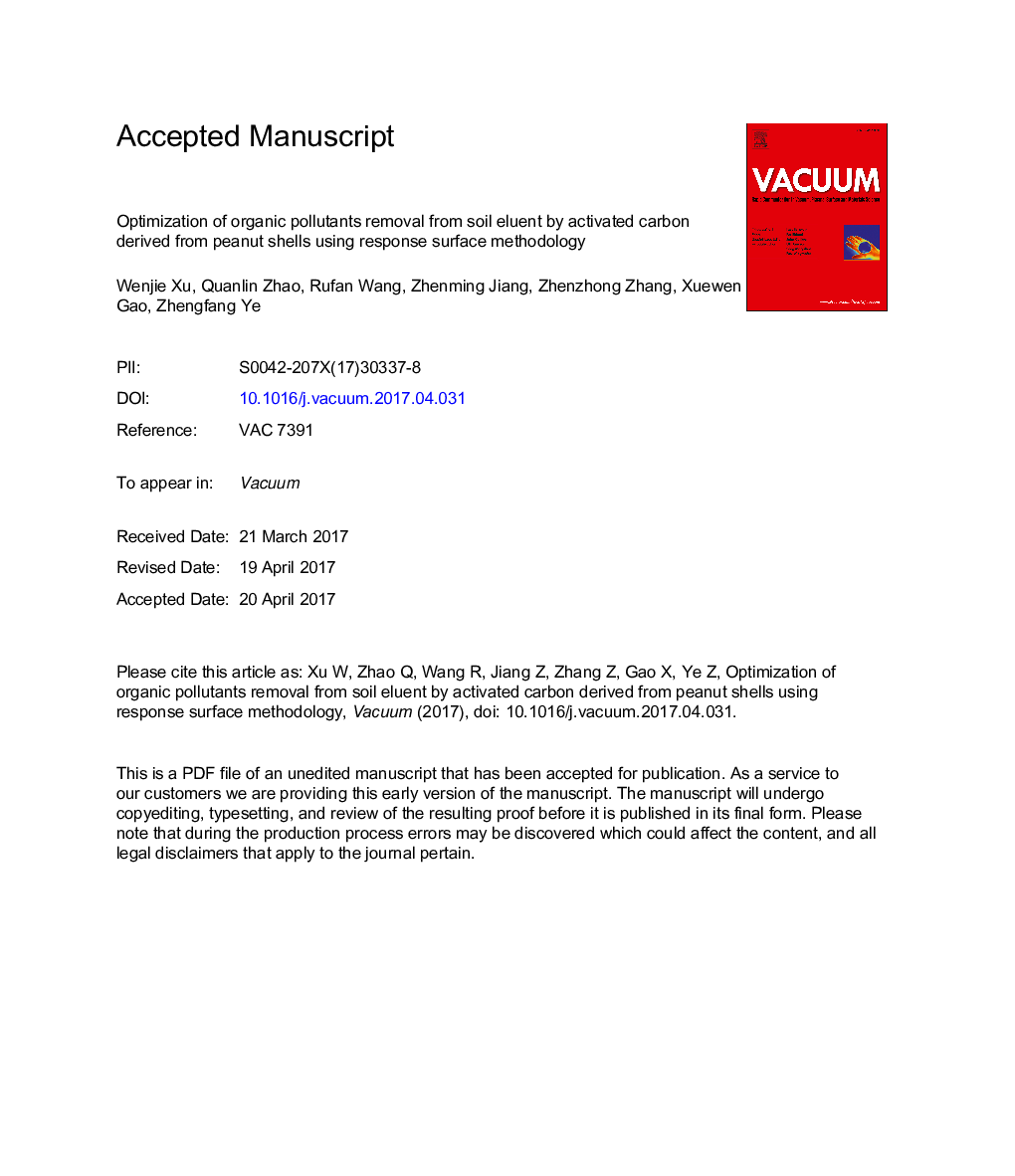| Article ID | Journal | Published Year | Pages | File Type |
|---|---|---|---|---|
| 5468195 | Vacuum | 2017 | 40 Pages |
Abstract
In this study, a cost effective activated carbon was prepared using peanut shells as precursor material, which was used for treatment of soil eluent containing explosive contaminants. The effects of temperature, contact time, adsorbent dosage and pH were optimized by response surface methodology (RSM). The Langmuir and Freundlich adsorption isotherm models were used to fit the adsorption process of chemical oxygen demand (COD). The results showed that the maximum COD removal was obtained when temperature, time, absorbent dosage and pH were at 15 °C, 236 min, 6.06 g and 4, respectively. The adsorption of COD on activated carbon was in accord with Freundlich isotherm. Pseudo-second-order model can be used to describe the adsorption kinetics of COD. After adsorption at the optimized conditions, the chrominance reduced from 400 to 5°, COD decreased from 1012.60 to 73.51 mg Lâ1, with COD removal of 92.74%, the concentrations of the two main contaminants 2, 4-dinitrotoluene-3-sulfonate (2, 4-DNT-3-SO3-) and 2, 4-dinitrotoluene-5-sulfonate (2, 4-DNT-5-SO3-) reduced from and 332.66 and 14.24 mg Lâ1 to 0 mg Lâ1, respectively. The activated carbon produced from peanut shells could be a potential cost effective adsorbent for treatment of soil eluent containing explosive pollutants.
Keywords
Related Topics
Physical Sciences and Engineering
Materials Science
Surfaces, Coatings and Films
Authors
Wenjie Xu, Quanlin Zhao, Rufan Wang, Zhenming Jiang, Zhenzhong Zhang, Xuewen Gao, Zhengfang Ye,
